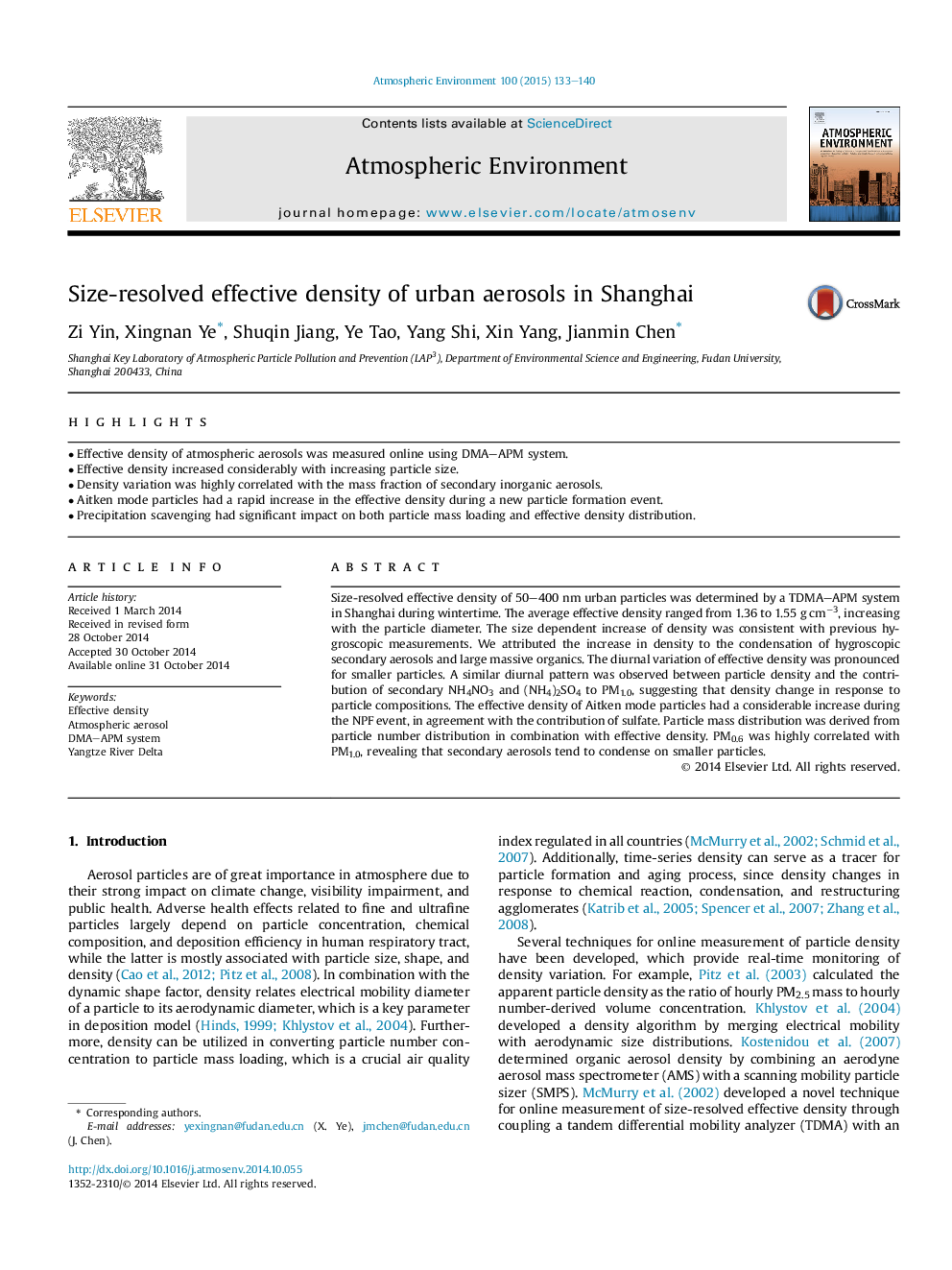| Article ID | Journal | Published Year | Pages | File Type |
|---|---|---|---|---|
| 6338722 | Atmospheric Environment | 2015 | 8 Pages |
Abstract
Size-resolved effective density of 50-400 nm urban particles was determined by a TDMA-APM system in Shanghai during wintertime. The average effective density ranged from 1.36 to 1.55 g cmâ3, increasing with the particle diameter. The size dependent increase of density was consistent with previous hygroscopic measurements. We attributed the increase in density to the condensation of hygroscopic secondary aerosols and large massive organics. The diurnal variation of effective density was pronounced for smaller particles. A similar diurnal pattern was observed between particle density and the contribution of secondary NH4NO3 and (NH4)2SO4 to PM1.0, suggesting that density change in response to particle compositions. The effective density of Aitken mode particles had a considerable increase during the NPF event, in agreement with the contribution of sulfate. Particle mass distribution was derived from particle number distribution in combination with effective density. PM0.6 was highly correlated with PM1.0, revealing that secondary aerosols tend to condense on smaller particles.
Related Topics
Physical Sciences and Engineering
Earth and Planetary Sciences
Atmospheric Science
Authors
Zi Yin, Xingnan Ye, Shuqin Jiang, Ye Tao, Yang Shi, Xin Yang, Jianmin Chen,
